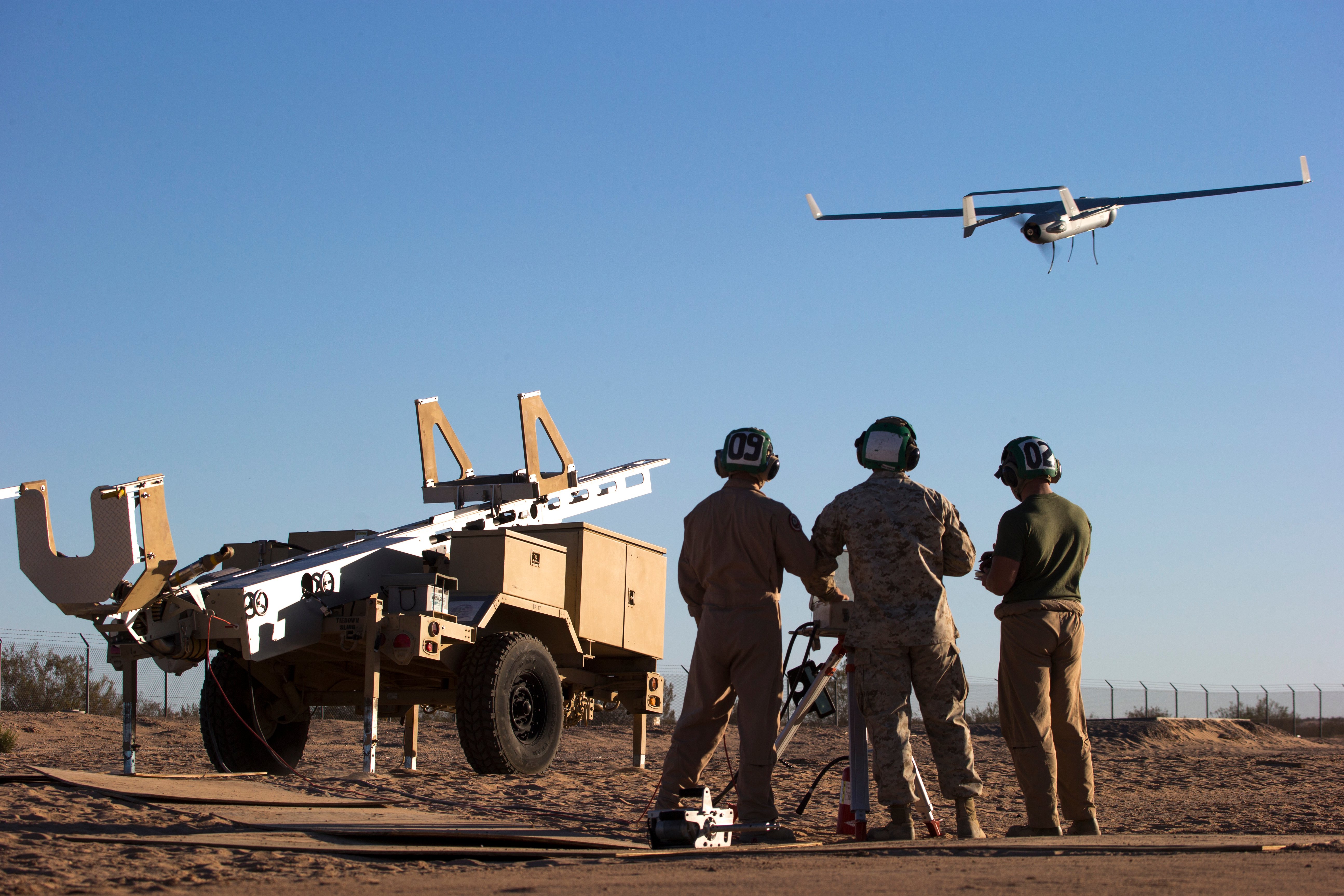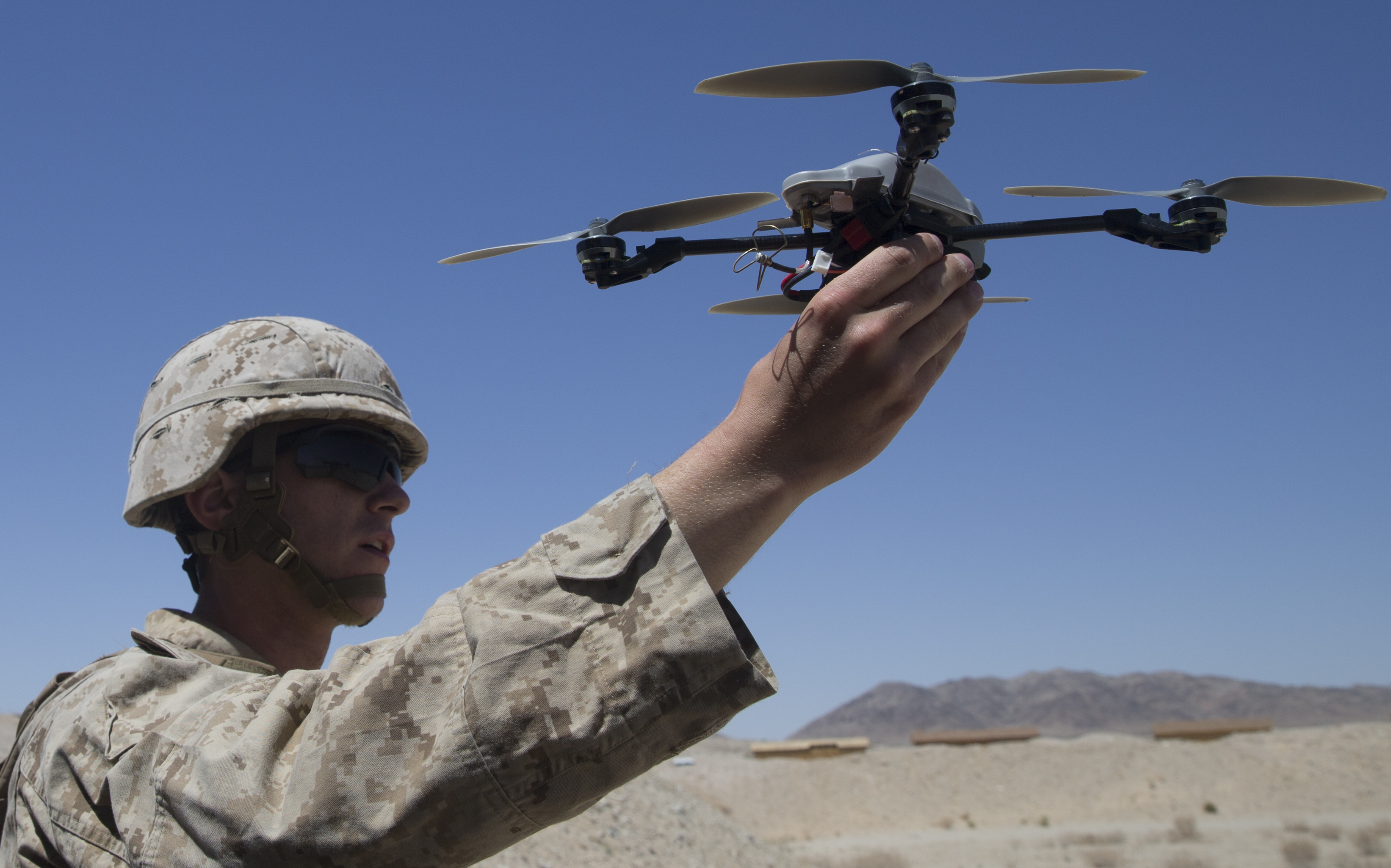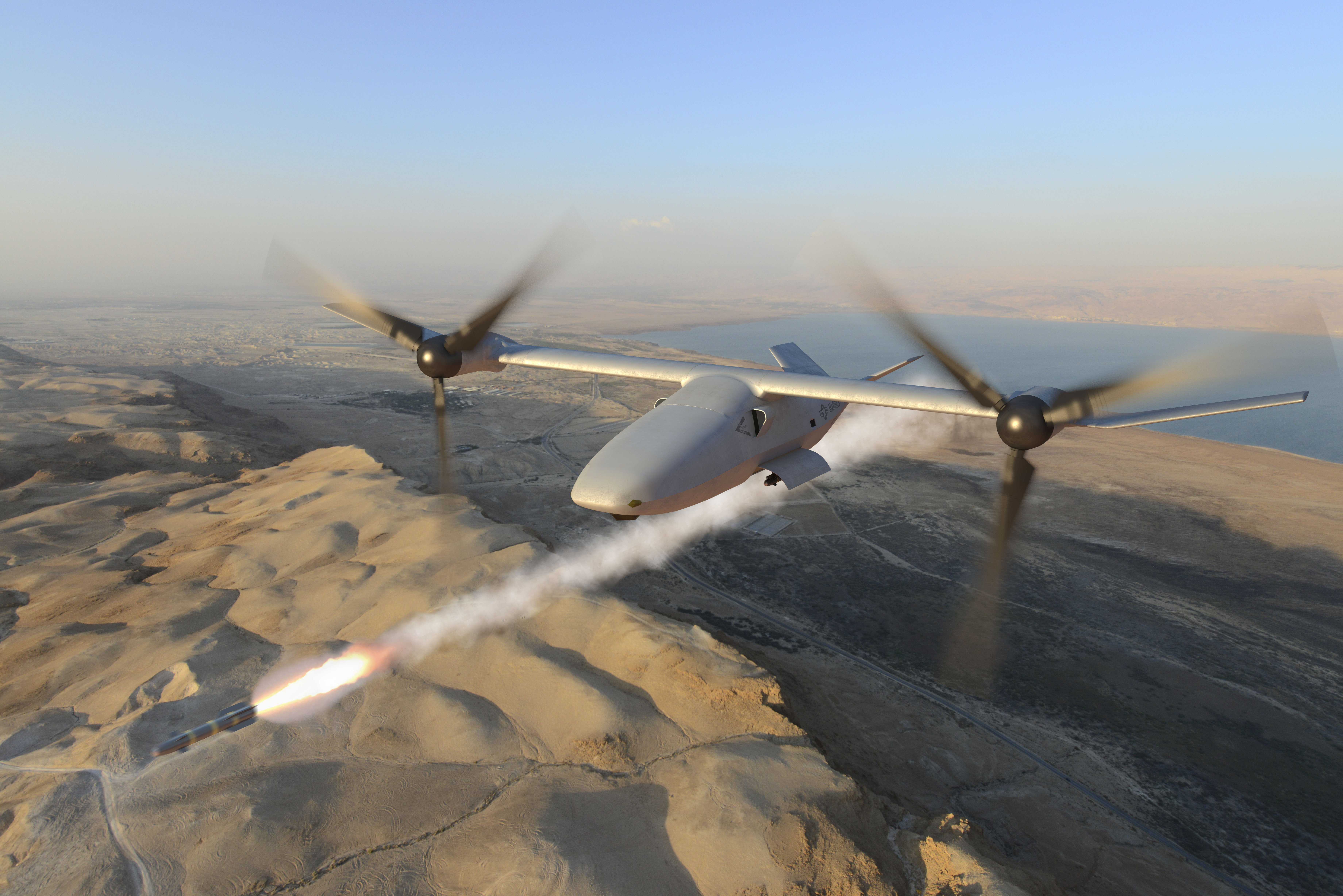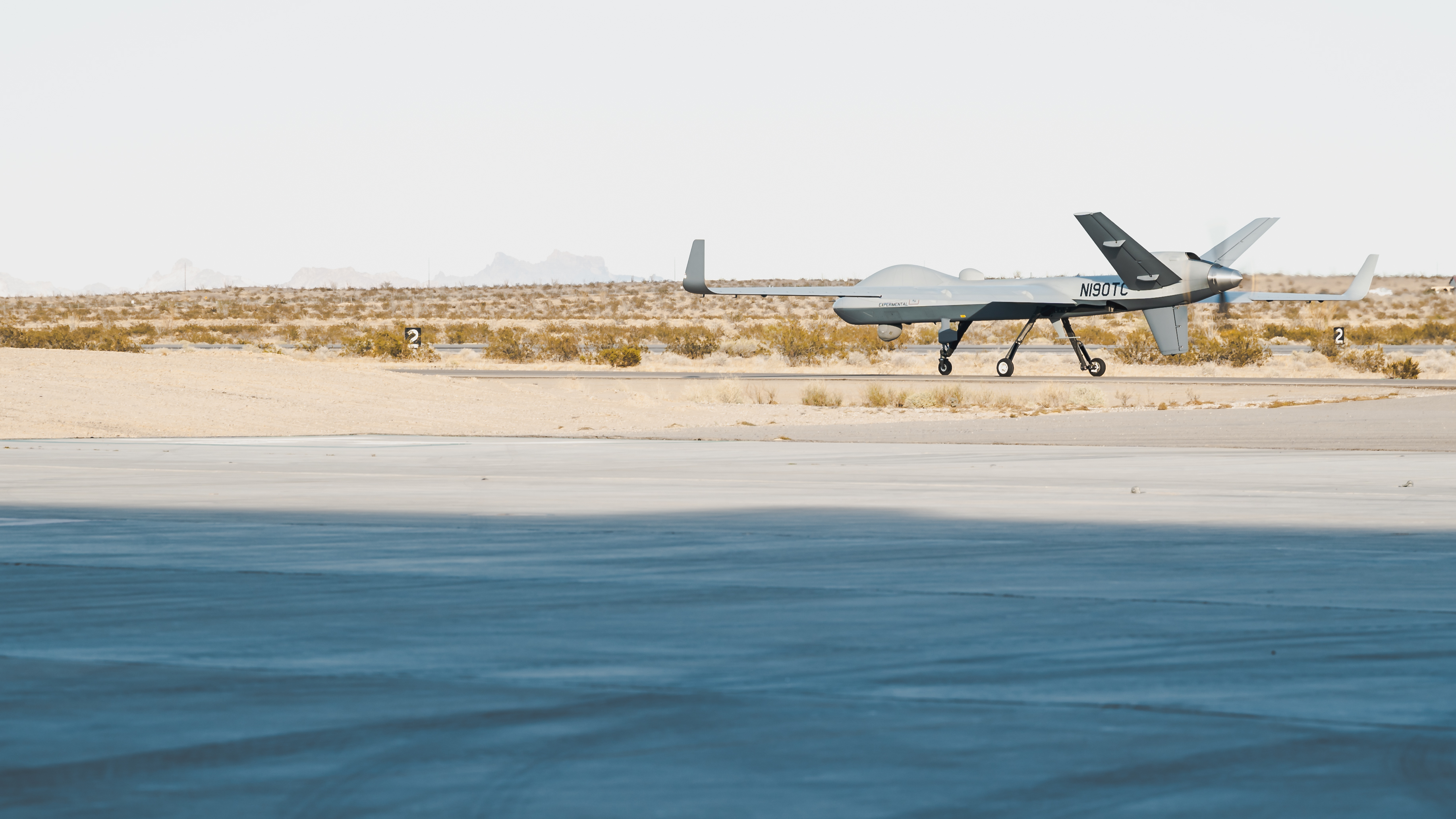
While the Marine Corps is still charting its path forward for large drones, the service is moving smaller unmanned aerial vehicles (UAV) into its ground combat units.
Speaking over the weekend at a panel during the Tailhook Association’s virtual symposium, Deputy Commandant of the Marine Corps for Aviation Lt. Gen. Mark Wise said the service still plans to have the larger Group 5 UAV capabilities housed in the aviation combat element and to send the smaller UAVs to the ground community to directly support their missions.
“Initially, as we look at how our unmanned side is going to evolve, we’re taking a lot of the Group 1 through 3 capabilities and moving them into the ground combat element. They will receive some support from us, but it will be resident within their maneuver units, when you start looking at the Littoral Regiments and so forth,” he said.
“As we look at the larger ones, the Group 5 capabilities and the Medium Altitude Long-Endurance … that will continue to be resident on the aviation side of the house for all of the man, train and equip side of that.”
The idea is that the Marine Corps’ smallest units, like squads and platoons, could operate the smallest UAVs as a way to keep costs down while providing an organic situational awareness capability, according to Maj. Steven Norris, the aviation combat element branch chief for science and technology at the Marine Corps Warfighting Lab.
“So you think of quadcopters fighting at your tactical, your squad level. You think of your Group 1, Group 2s fighting at your platoon, your company. And then your Group 2s and 3s fighting at your battalion, regimental, and [Marine Expeditionary Unit/Amphibious Ready Group] constructs,” Norris said during a panel last week at the Association for Unmanned Vehicle Systems International’s (AUVSI) virtual conference.
“That allows us to have an over-redundant approach at a very cost-effective nature,” Norris added. “Because if you look at today’s technology, quadcopters are a little bit cheaper than your Group 1 UAS. Group 1’s a little bit cheaper than your Group 2, and so on and so forth, escalating in size. So what we would like to do is make sure that we are fighting in an [expeditionary] level.”

While the Marine Corps recently scrapped plans to immediately pursue a large ship-based drone, the Marines have learned to operate the MQ-9 Reaper, a Group 5 UAV the Air Force flies, and are gearing up to soon use Reapers that can perform strike missions.
“Last year, in response to an urgent need statement from the United Stated Marine Corps, we helped them acquire an MQ-9 Reaper and operate it outside the continental U.S. in support of forces forward for persistent [intelligence surveillance and reconnaissance],” Rear Adm. Brian Corey, commander of the Navy’s Program Executive Office for Unmanned Aviation and Strike Weapons (PEO U&W), said during a program update last week at AUVSI.
The goal, according to Corey, is for the Marines to take lessons learned from operating the Reapers and apply them to the development of the MUX program.
“We’ve recently transitioned to add a persistent strike capability, which the Marines will operate in the coming months, which will give them a capability that they have not had from an unmanned systems,” Corey said of the MQ-9 Reaper. “Together, these two efforts will allow the Marine Corps to learn how to operate a Group 5 UAS and inform the future of their MUX program.”
The service had envisioned its MUX program, or the Marine Air-Ground Task Force (MAGTF) Unmanned Aerial System (UAS) Expeditionary, as a Group 5 UAV that could operate off of amphibious ships.
But as the Marine Corps began pursuing MUX, the service found it couldn’t achieve the program’s many requirements with one air vehicle for a reasonable cost.
Corey described MUX as a crucial element of Marine Corps Commandant Gen. David Berger’s efforts to redesign the force, an effort Berger is pushing to prepare the Marine Corps for a fight against a near-peer threat in 2030.
“MUX is a medium-altitude long-range UAS that will be a cornerstone capability for the Marine’s Littoral Regiment,” Corey said last week. “The land-based system will provide ISR and network data to expeditionary forces and act as the foundational element of Marine Corps force design.”

Rear Adm. Gregory Harris, who leads the chief of naval operation’s air warfare directorate (OPNAV N98), said the Navy and Marine Corps are searching for “synergy” as they each pursue future vertical lift and MUX.
“We want to be able to have organic ISR capability, 24/7, resident within the [carrier] strike group. MQ-25, while it’s predominantly a tanker, does have an ISR capability. It does start to lend a piece to as we look at distributed maritime operations, what our rotary wing community – in particular with MQ-8 [Fire Scout] – is bringing to the picture with unmanned rotary assets out there providing us ISR capability,” Harris said.
“The Navy and the Marine Corps are looking at other options as we look at future vertical lift and the Marine Corps looks at their MUX – or MALE, their medium-altitude long-endurance system. And the deputy chief of aviation and I have talked quite a bit about how we can find synergy between the Marine Corps and the Navy’s pieces of the MUX/MALE and our future vertical lift unmanned portion of it,” he added.

During the program update at AUVSI, Corey also said the Navy is assessing upgrades for the Marine Corps’ RQ-21 Blackjack, a Group 3 UAV that can be launched from ships.
“We’re currently continuing to look at upgrades for the system – some of our future initiatives include beyond-line-of-sight capability, a vertical take-off and landing kit, a bandwidth-efficient common data link, and portable ground control station,” Corey said.
As for the Navy’s MQ-8C Fire Scout Group 4 UAV, Corey said the service is performing radar tests on the updated variant and hopes to utilize the UAV with ships other than the Littoral Combat Ship.
“We’re also looking to extend its operations beyond LCS. In April of this past year, our team successfully completed dynamic interface testing aboard the USS Hershel ‘Woody’ Williams,” he said. “This event marked the first time Fire Scout operated from an ESB class ship, which opens up opportunities for future deployments.”





